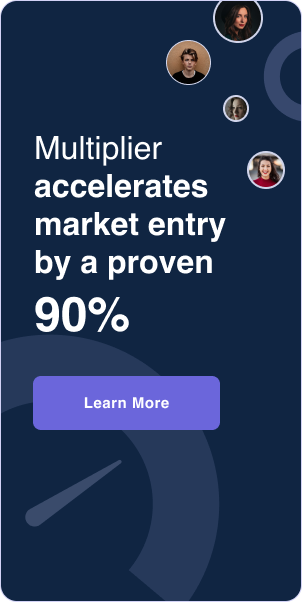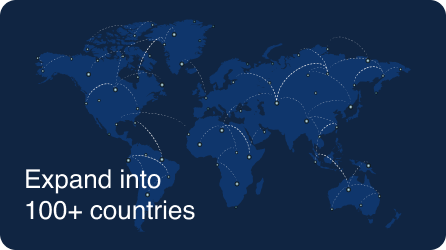A good business is a marker of a productive workplace. It equates not only to revenue-generating activities but also to exemplary models of sterling business and human resource management.
Traditionally, the HR departments focus only on limited responsibilities such as annual pay reviews, hiring, firing, etc. However, with changing times and new hurdles, HR’s ambit of work has widened to many managerial activities. Now, an HR department is responsible for:
- Recruiting and onboarding new employees
- Maintaining and regulating the culture of the company
- Handling employee training and performance management
- Building good communication practices for business
- Handling legal compliance
- Managing internal or external conflicts
- Ensuring employee benefits and workplace activities
Missing out on any of these can bring a big challenge for businesses. So, for small and mid-scale companies, HR outsourcing can be a cost-effective and professional way to handle everything. PEO, ASO, HRO, and HRIS are some HR outsourcing solutions available in the market.
In this blog, we will discuss PEO and ASO in detail to help you understand how they are different and similar so that you can choose the right solution for your business. Let’s start with a brief about the advantages of outsourcing your HR service.
What Are the Benefits of Outsourcing HR?
Efficient model
Outsourcing an HR service guarantees efficiency. They take over the HR duties and responsibilities. It frees up the workforce to focus on core activities and profitable endeavors.
Cost-effective
Using HR software like PEO is always more cost-effective rather than hiring full-time employees to handle in-house HR tasks.
Organized development
Outsourcing HRs creates a sense of professionalism. There is an impartial analysis of every employee’s performance, and it sets out the best plans as per the client’s requirements.
Risk management
The best part of outsourcing HR is that it reduces business risks. They usually have a team of HR experts that is always up to date and thus help you manage all kinds of compliance issues and risks.
What Is a PEO?
Professional Employee Organization (PEO) is a firm that helps businesses manage employees, payroll, benefits, insurance, etc. other HR responsibilities compliantly.
How does it work?
When you choose PEO to handle your HR service, you will sign a co-employment agreement with the PEO company and allow them to work as co-employer for your employees. The agreement divides the responsibilities between your company and PEO.
As a co-employer, PEO usually manages employee payroll, welfare policies, and compliances; and provides employee handbooks, risk management services, etc., to the client. But, these services can vary as per mutual agreement.
This arrangement gives complete control to PEO on mutually decided services and allows PEO to do it under its own name and employer identification number.
This relationship is often misunderstood since it contractually allocates powers to a third party. However, the fact remains that employers make the majority of executive decisions, such as hiring, firing, demotions, promotions, day-to-day scheduling, performance management, workplace safety, reviews, etc., and PEO works to prevent all the potential pitfalls a business can tumble into.
The most significant benefit of using PEO service is that PEO can offer HR services and sponsor health benefits that are usually not available for SMB employees.
What Is an ASO?
Administrative Services Organization (ASO) is also an HR outsourcing company. The difference between PEO and ASO is that there is no joint employment relationship in this instance.
How does it work?
If you choose ASO professional services, you don’t need to sign a co-employment agreement with the ASO company. ASO handles day-to-day HR tasks for your company but does not work as a co-employer for your employees.
The Administrative Services Organization (ASO) model allows clients to choose HR services. ASO processes payroll, tax filing, and insurance under the client’s name only. Unlike PEO, ASO does not sponsor employee health benefit programs but can help the client secure the coverage.
An ASO plan gives employers all the room to control the benefit costs. One of the classic examples of this is administering the client’s self-funded health insurance.
It gives employers less flexibility when choosing a plan with a third-party administrator. The insurance companies provide minimal to no insurance protection under the ASO arrangement. Since there is no employer responsibility leveled under the contract for the ASO, self-funded insurance puts an employer at financial risk. This is why they may also establish a stop-loss insurance cover.
These self-funded plans are only common among larger firms, as the risk cost coverage is spread across all the employees and dependents.
Despite the shortcomings, ASO still stands as an HR service and performs its duties as such. Since it does not interfere with the management system, the companies can still retain their internal HR staff.
What Are the Differences Between PEO and ASO?
The difference between PEO and ASO is their business model. A PEO becomes the co-employer under this fiduciary relationship and shares the liability with the worksite employer or client company.
An ASO can form a contractual relationship with the company. However, the client company retains its liability while the HR services are performed by the ASO.
Insurance Handling
They both handle insurance options. But since the agreement differs in these two scenarios, their method of handling is also different.
Administrative Services Organization (ASO) manages multiple insurance carriers for their clients. On the other hand, PEO has a single carrier. For this reason, the insurance carriers and vendors rely on companies with PEO arrangements. A PEO team is trained to avail such services to the worksite employee and thus reduces the burden on their client.
Third-party management
The main difference between ASO and PEO is that an ASO is flexible in choosing and managing vendors for the company, but PEO can effectively handle this task despite their inflexibility. It may seem obtrusive as an employer; however, here lies the beauty of a PEO service.
An ASO is not obligated to take over the employer’s tasks to manage the partners. It can best administer its services while the company does the managerial work.
PEO for global companies, on the contrary, has trained teams to deal with third parties daily. Their experience is a necessary tool that a company can employ to its advantage.
Employee Benefit Plans: A business should select plans according to its needs and must carefully consider such executive decisions. ASO can help you pick and shortlist the plans that you choose, but PEO can save the time and hassle of picking out the ideal vendors for your business.
PEO adds to the employment force. It gives off a strong impression to the vendors. Since the model allows them to carry out multiple responsibilities, they are also perceived as a reliable client.
One of the instances that can explain this volume pricing discounts. As an ASO, procuring plans and benefits for their clients comes with the element of unreliability. Since they are seen as separate companies, many vendors don’t enable the pricing benefits just by judging their scale.
PEO can circumvent that concern by acting as an obligatory backbone of their client. They are seen as a larger company and thus procure the benefits with the promise of mutual profits.
Compliance and liability factor: – PEO, in this case, is a co-employer. Therefore, it also shares a part of the employer’s liability. They are bound to comply, absorb the risks, and overall promote the business’s welfare. This is the key difference between ASO and PEO.
The ASO model does not take the liability approach. Their roles for their client can stretch to a planner or consultant at maximum. Although they do desire a good outcome for their client, they also let them retain their autonomy as a separate company.
Hence, some differences make one a profitable model in certain situations.
It is also pertinent to note that despite their variation in approach, they still aim to provide one service that they have in common, i.e., Human resources.
What Are the Similarities Between PEO and ASO?
- Both of them provide a managerial service. They are meant to give you a cost-effective and balanced HR service for the seamless functioning of their client’s business.
- They are outsourcing companies. It means businesses hire them as external regulators, providers, and managers for the company’s affairs.
- They mostly cater to small and medium-sized businesses. However, they also serve their benefits to larger companies.
- PEOs and ASOs aim to ease and administer the day-to-day operations of the businesses. Their purpose is to free up time and the workforce which is involved in the HR department to ease their burden, hence employing their skills on business-related plans.
- Since these organizations are well-versed and trained in their services, they also plan out the best practices and avail the best strategies and technology depending on their clients.
ASO vs. PEO: Key Differences and Similarities
| Comparison | PEO | ASO |
| Employer of the record | Since the agreement is signed in the form of co-employment, it makes them the ‘employer of record’ | There is no co-employment arrangement, thus it does not become an employer of the record |
| HR services | It provides a basic HR service and gives you the leeway to add more | They curate their HR service according to the employer’s choice |
| Costs | The cost is often high | Opting out services can cut off the costs |
| Benefits | Inflexible. It picks the responsibility to administer cheap and high-quality employee benefits. | Flexible. They do not administer any employee benefits since they are covered by the employer’s policies. |
| Risk management | Shares the liability with the worksite employer | Does provide a safety program but does not assume and manage any risks involved |
| Arrangement | Caters well to small and medium-sized businesses | Ideal for larger businesses |
| HR department | It reduces the value of an internal HR staff | Retains the HR staff of the company |
ASO vs. PEO- Which Is Better for Your Business?
These HRO models come with their own sets of pros and cons. Depending on the fiduciary and strategic roles they play in their client’s business, they can both offer similar and different services.
Many businesses are attracted to Administrative Services Organization (ASO) arrangements if they wish to maintain their staff’s status quo. However, PEOs like Multiplier aim to minimize liability and ensure maximum compliance due to their vested interest as co-employer.
Research also suggests that PEOs help small businesses develop 7 to 9% faster and are 50% less likely to fail. They also provide their expertise in HR functions for employees’ benefits plans and insurance coverage with the promise of shedding off a chunk of the company’s liability.
The Bottom Line on ASO vs. PEO
Outsourcing Human Resources is primarily the means to an end for many companies. By choosing the appropriate model for your company, you are not only contributing to the welfare of the workforce but also ascertaining the best performance out of them.
If you only need administrative support, then Administrative Services Organization (ASO) will work best for you. But, PEO is a charm for small and medium-sized companies. It covers all the necessary human resource services under one roof.
PEO helps you achieve smooth management, filling skill gaps, maximum risk absorption, and employee engagement—all for the success of your business.
If you are sure of choosing PEO, you can contact Multiplier for more information. Multiplier is SaaS-based PEO that helps in onboarding, and managing employees’ payroll, benefits, and insurance compliantly.
Book a demo now!


